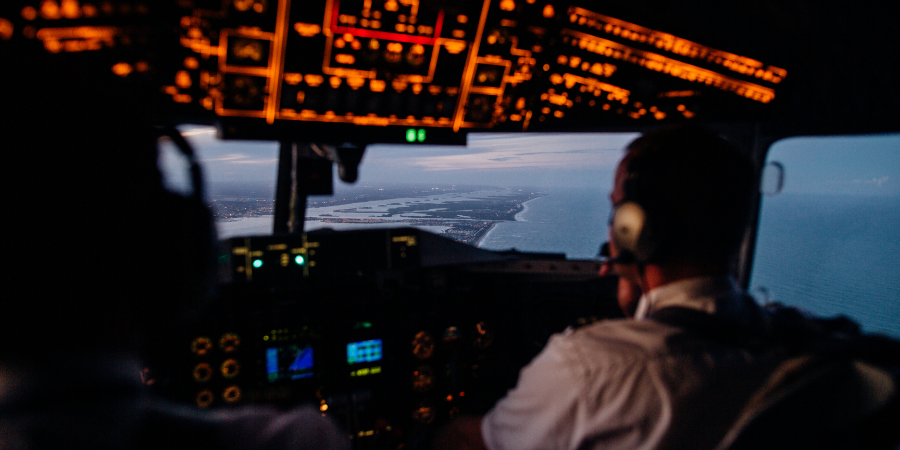Picture pilots sitting in the same cockpit with the same training, same hours, and same determination. Ten years later, one is building a global business, flying less but earning more, while the other is still relying on the airline roster.
What changed? Not their skills in the air, but their ability to use technology on the ground.
Technology has become a great divider.
It’s not about who works harder or who logs more hours. It’s about who treats technology as a multiplier, rather than just a distraction.
And if you’re not intentional about how you use technology, you’ll feel that divide more.
Key Takeaways
- The Divide in Aviation: Pilots are split into four groups: walkers, bikers, motorcyclists, and car drivers. The pace you choose decides your future, not the industry itself.
- Three Strategies: Distribution, automation, and amplification are the keys to compounding growth. Each lets you scale knowledge, save time, and magnify your strengths.
- AI Acceleration Factor: AI is no longer optional. It cuts creation time, automates support, and finds new opportunities. Pilots who embrace it will always move faster.

The Divide in Aviation: Four Groups of Pilots
Not all pilots are moving at the same pace. Some are walking, some are sprinting, and others are building whole new highways with technology.
Here’s how the four groups look today:
1. Still on Foot: Stuck in Old Patterns
Some pilots are still living in the same mindset myths that are keeping them grounded. They rely only on seniority lists and promotions within airlines.
For them, technology looks more like a threat than an opportunity. They stay close to crew bases, waiting for their turn instead of creating new paths.
Due to this, foot pilots get stuck while their colleagues move ahead.
2. On Bicycles: Gaining Early Momentum
Some pilots have now hopped onto bicycles. These are the pilots building small online courses, sharing aviation knowledge through YouTube or LinkedIn, and taking on consulting projects with companies worldwide.
They use technology not to replace their flying, but to add income streams around it.
Studies also show that 65% of business owners, including those who are pilots-turned-entrepreneurs, expect to see growth this year. This shows how these bicycle riders can already see the benefits of small ventures.
3. On Motorcycles: Accelerating with Technology
The motorcycle group moves faster, taking real risks and building bigger systems. These pilots launch aviation tech platforms, digital training academies, or AI-powered solutions that can scale globally.
These entrepreneurs are no longer tied to a single airline or a single city. Instead, they build products that reach international markets.
In fact, the Leaders in Aviation Survey revealed that over 33% of aviation leaders have already been using AI. And these are the businesses that are growing much faster than those that have not yet adopted AI.
4. In Cars: Driving Digital Empires
At the top of the divide are the car drivers. These pilots aren’t just earning side income; they are leading global businesses from their laptops. They’ve built scalable enterprises and networks that stretch across continents.
These entrepreneurs are the ones enjoying true location and time independence. And all that by turning aviation knowledge into a worldwide asset.
The car drivers are already there, creating opportunities not only for themselves but also for others.
So, which one of these do you want to be?
Why Technology Creates Winners and Losers
If you think technology creates winners or losers on its own, you’re wrong. It simply magnifies how people choose to use it.
For instance, two pilots can possess the same tools yet end up living completely different lives.
One treats technology as a lever, building systems, sharing knowledge, and creating opportunities beyond the cockpit. The other treats it as background noise, using it only for convenience, never for growth.
Remember, companies that adopt digital strategies are 23 times more likely to acquire new customers than those that do not.
The same applies to individuals.
A pilot who embraces technology to build reach, influence, and income will always outpace the one who ignores it. Furthermore, the career comfort trap of safety is preventing pilots from seizing opportunities that are now abundant.
Three Strategies to Leverage Technology
Pilots who succeed are the ones who apply leverage in smart, simple ways. Let’s break it down.
1. Distribution: Scale Your Knowledge Globally
The easiest way for a pilot to use technology for distribution is by sharing what they already know. Flight training tips, industry insights, or even lessons learned from the cockpit can be packaged into online courses.
A single video explaining a common pilot exam question can reach thousands of students worldwide.
This turns one hour of recorded effort into an asset that works 24/7.
2. Automation: Free Up Time for High-Value Work
The second strategy is automation, which involves eliminating repetitive, low-value tasks. For a pilot, this might mean automating scheduling systems for flight students, using email sequences to answer FAQs, or setting up payment systems.
By doing this, you protect your time and energy for higher-value opportunities, such as creating new digital products or building partnerships.
Every hour saved through automation is an hour you can spend scaling your income.
3. Amplification: Use Tech to Magnify Your Strengths
Ultimately, technology is most effective when it leverages your existing strengths.
If you’re a strong communicator, platforms like YouTube or podcasts magnify your voice. Similarly, if you’re skilled in technical knowledge, software tools, and AI can help you break down complex ideas into simple digital resources.
Just like a radio tower turns a small signal into something thousands can hear, tech can turn your skills into influence.
The AI Acceleration Factor
AI is no longer a tool you can ignore. It has become the engine upgrade that decides who pulls ahead and who falls behind.
Pilots who embrace AI are finding faster ways to create value.
For example, a single training module that once took weeks to prepare can now be built in hours with AI assistance.
AI also handles the background work that would otherwise consume time. Automated support systems can provide instant answers to student questions. At the same time, trend analysis tools can help pilots identify emerging opportunities in aviation education and business.
The main lesson for you here is that AI doesn’t just help you keep up with the world; it helps accelerate your growth.
The Upgrade You’ve Been Waiting For
The truth is simple. Technology will not slow down for anyone. AI is already reshaping the landscape of opportunity, and those who act now will be the ones flying ahead, while others remain grounded.
However, if you feel like you’re not ready yet, that’s perfectly fine. What matters is being honest about where you stand. To help, we’ve created the Life After the Sky Checklist.
It will show you how prepared you are, and more importantly, what steps you can take right now to get ahead instead of falling behind.
Do you want to: wait for the change, or become the change.
Invitation to join our FREE Strategy Session
Most pilots are one honest conversation away from clarity. This is that conversation.
Complete our “Life After the Sky” checklist, then join me for a FREE 15-minute “Strategy Session” via Zoom.
This session has been created for pilots who want to take ownership of what comes next.
Those who want action, not just to talk about it.
In just 15 minutes, we’ll:
- Review your checklist results
- Identify the one obstacle holding back your reinvention
- Translate your checklist results into a clear starting point
Start your pre-flight assessment for the next chapter of your journey by Booking your free strategy session here!



